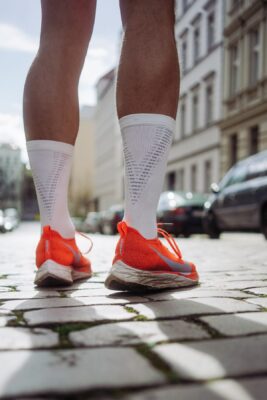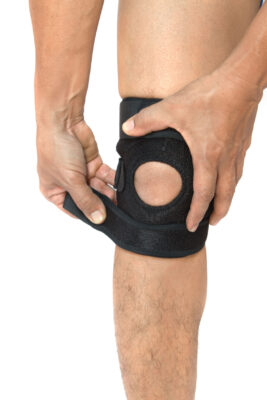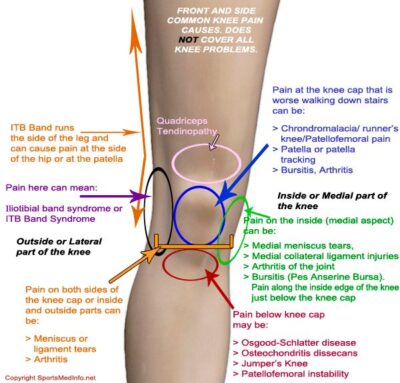Revision Knee Replacement
By Mr. Sam Rajaratnam FRCS (Tr. & Ortho)
The knee replacement procedure (arthroplasty) has become more precise, and with improvements in implant design, knee replacements are lasting longer than ever. It has been shown recently that implants are capable of lasting for more than 25 years.
KNEE REVISION – WHAT IT MEANS
Revision knee replacement is the term given to a procedure which replaces part or all of a knee implant which is no longer functioning correctly. This procedure is performed on a regular basis, but it should not be forgotten that it is complex major surgery which has to be planned very carefully with the use of specialist tools and implants. If the bone around the knee implant has become damaged, bone grafts or metal augments may have to be utilised. It is exceedingly important to carefully assess why a joint replacement is failing before committing to a revision. A revision should only be undertaken by someone who has been appropriately trained in the procedure, and is an expert who has a large joint replacement practice. Patients are encouraged to inquire about the cumulative experience of their treating surgeon and to view an individual surgeon’s National Joint Registry results.
WHAT ARE THE REASONS FOR REVISION KNEE REPLACEMENT?
Knee replacements are designed to last a long time. However, because people are living longer, older people with knee replacements are now more likely to outlive their implants. In addition, younger patients, who have had knee replacement surgery, are obviously significantly more likely to outlive their prosthetic knee.
Some initial pain after primary knee replacement surgery is to be expected, but if there are longer-term problems such as a fracture, wear and loosening of the implant, malalignment, infection or stiffening of the knee, it may mean that revision surgery is needed.
FRACTURE
If there is a fracture around the site of one of the implant components, a periprosthetic fracture, revision surgery is a likely result. Older peoples’ bones tend to become weakened because of a reduction in size and density, making them more susceptible to fracture in the event of a fall or other mishap. Younger people are more likely to put a strain on the artificial joint because of their more active lifestyle, which adds to the risk of earlier revision surgery. In the event of a fracture, the surgeon will assess the condition of the bone, the type of fracture and how the fracture affects the implant before deciding if revision surgery is needed.
WEAR AND LOOSENING
Knee joint prostheses are typically composed of a metal alloy for the bone attachments with a polyethylene spacer pad replacing the cartilage of the knee. Polyethylene has been used in knee implants for about 50 years and the polymer has been improved over this time. The manufacturing processes are now excellent, allowing excellent function with minimal wear rates. However, if the knee does fail due to a component fault, it is often this polyethylene component which is the most likely part to display signs of wear, particularly in older implants manufactured some time ago. If a prosthesis has become worn then revision surgery may be inevitable.
SYMPTOMS OF A LOOSE KNEE REPLACEMENT
Loosening of the implant may also be a reason for revision and may be indicated by pain, instability or a clicking noise from the knee. Here, whilst the prosthetic knee joint was initially firmly fixed, it can loosen over time. Sometimes, clicking may relate to ligaments that are loosening or becoming incompetent. Loosening may also be a result of osteolysis. Osteolysis occurs if particles from the polyethylene spacer become detached, enter the joint, and cause the body’s immune system to attack bone cells as well as the foreign particles. Rarely, infection can lead to loosening and can either be acute sepsis when the patient becomes very unwell, or more commonly, a low-grade infection which can rumble on for many years causing pain and stiffness.
MALALIGNMENT
Another reason for revision surgery may be malalignment of the joint replacement. The overall alignment of an implant depends on a combination of bony cuts and ligamentous balancing. Most primary joint replacement surgeons will want to get both of these key components right, but sadly, this is not perfectly achieved in every case. Thus, instability can arise from poorly aligned components, inadequate soft tissue balancing or injury to ligaments around the knee. If instability or malalignment happens it can also lead to unusual stress conditions on the components which may result in accelerated wear on the prosthesis and its ultimate failure.
INFECTION
Infection is a possibility in any surgical procedure. Every effort is made to avoid infection with meticulous surgical technique, antibiotics and the latest antiseptic techniques, but as with any operation, there is always a small chance of post operative infection in the implant. Infection may happen at any time, possibly long after the operation. It can either be in the wound or in the vicinity of the implant. An infection in the femur or tibia, at the site of the implant, or on the implant itself will present as the normal symptoms of infection such as pain, warmth, tenderness, fever etc., and may result in the prosthesis becoming loose. If nonsurgical treatment does not have any effect, the joint has to be washed out and perhaps the joint removed and replaced.
Luckily it is only in very rare cases that revision surgery is required for this reason. Mr Rajaratnam has experienced only 0.1% in his series of over 3,000 primary knee replacements and has one of the lowest all-purpose revision rates on the UK National Joint Registry. He is also an expert in salvaging and revising knee replacements if an infection was to occur, and is frequently sent difficult cases by other surgeons for revision surgery.
STIFFENING
Stiffening or arthrofibrosis of the prosthetic knee can occur because of an accumulation of scar tissue. If the scar tissue cannot be dispersed with exercises and physiotherapy a manipulation under anaesthetic may be helpful. Rarely revision surgery may be necessary to remove the scar tissue.
REVISION SURGERY
The surgical process is conducted under a spinal or general anaesthetic. The surgeon makes an incision in the front of the knee in order to examine the condition of the primary implant components. The surgeon will also examine the bone surfaces of the femur and tibia once the implants have been removed to determine if any bone grafts are necessary. The soft tissue around the knee is inspected to ensure that it is free from infection. Removal of the old implant and surrounding cement may be a complex procedure as the separation of the original implant from the bone may include some bone loss and needs to be done very carefully. The attachment of a revision prosthetic knee may then need additional work to be done in the event of any bone loss. This may involve the use of cement augmentation, modular augments or more rarely bone grafts. Finally, any necessary adjustments are made to the surrounding soft tissue.
Mr Rajaratnam has extremely low revision rates for his own primary knee replacements. He also has an international reputation as one of the leading Revision Knee Surgeons in the UK and regularly sees patients from all over the world who travel in for a second opinion on their painful or failing knee replacements. Although corrective surgery may be required, he generally only recommends further surgery if conservative measures are not adequate, and generally only as a last resort.
IS RECOVERY MORE DIFFICULT AFTER REVISION SURGERY?
Recovery is more difficult than for primary knee replacement, and the recovery period and procedure can be a little longer. Mr Rajaratnam advocates speedy rehabilitation together with focused physiotherapy and is a leading authority on Rapid Recovery techniques. This results in patients beginning to walk 3-4 hours after surgery and leaving the hospital after 2-3 days. Following on from this a programme of physiotherapy aimed towards strengthening the muscles, increasing muscle tone and achieving a full range of pain-free movement will normally be organised.
CONCERNS RELATING TO YOUR PRIMARY KNEE REPLACEMENT
If you are worried about stability, are experiencing pain, stiffness or other symptoms relating to your primary knee replacement, Mr Rajaratnam welcomes patients who require a second opinion.



